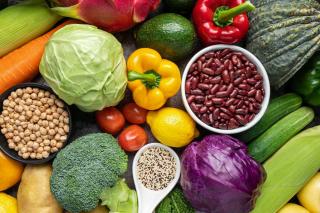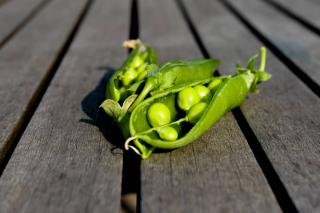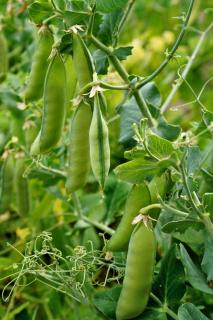

Beans, peas, lentils, soybeans… the legume family all share flowers shaped like butterfly wings, roots that lock nitrogen into the soil, and seeds that have high levels of protein. To sum it up, it just what any garden needs!
Whether they’re eaten when still young in the pod, like string beans, snow pea, green peas) or dried when prepared for long-term storage like lentils, broad beans, soybeans, chick peas, etc, all the seeds produced by the large Fabaceae family provide us with a very high nutritional value. Meat-based diets that are often favored today have led many to forget this, but times are a-changing!
 Rich in fiber, in group B vitamins and minerals, they are an important source of protein and their fat content is extremely low. Together with cereal, elements of the legume family provide a balanced diet and the proteins they impart are more readily put to use by our bodies and are more environment-friendly to produce than meat.
Rich in fiber, in group B vitamins and minerals, they are an important source of protein and their fat content is extremely low. Together with cereal, elements of the legume family provide a balanced diet and the proteins they impart are more readily put to use by our bodies and are more environment-friendly to produce than meat.
Nations and peoples from the entire world have been cooking these for millennia. These dried legumes are perfect for a number of different and easily digested, healthy recipes. Check how healthy broad beans are, for instance.
If dreary memories of school chow make you feel queasy around beans, shut out the past and open your taste buds!
dreary memories of school chow make you feel queasy around beans, shut out the past and open your taste buds!
Special lentils with stewpot roast, French style cassoulet, Mexican chili-con-carne, Indian dal, Middle-Eastern houmous and falafel, and all sorts of purees, mashed beans, soups and tasty salads will fill you up!
These are often very affordable and easy to prepare, and if grown in your own garden, your meals will taste divine!
On top of the host of nutrients we can get from eating them, plants of the legume family are such an asset to the vegetable patch that even if you didn’t eat them you still should plant them. Their roots capture nitrogen from the air and lock it into the soil, and that’s a key nutrient for all other plants to grow well.
 To maximize their fertilizing activity, grow them in a different spot in the garden every year to rotate their benefits, preferably just after a crop that is very demanding and drains soil nutrients like tomato or cabbage. Broad bean and bean are very easy to grow, and for the slightly more delicate peas, use mulch on the ground and this will guard against the impact of dry spells.
To maximize their fertilizing activity, grow them in a different spot in the garden every year to rotate their benefits, preferably just after a crop that is very demanding and drains soil nutrients like tomato or cabbage. Broad bean and bean are very easy to grow, and for the slightly more delicate peas, use mulch on the ground and this will guard against the impact of dry spells.
There are also some species that are often specifically grown as green manure – such as vetch – between crops to regenerate the soil. Adding nitrogen is also useful even in the compost pile: remember to throw leaves and stems of your legume family plants in the compost for them to break down and feed the bacteria and tiny insects that are transforming your compost into healthy, rich soil.
Laure Hamann
Light edit by Gaspard Lorthiois